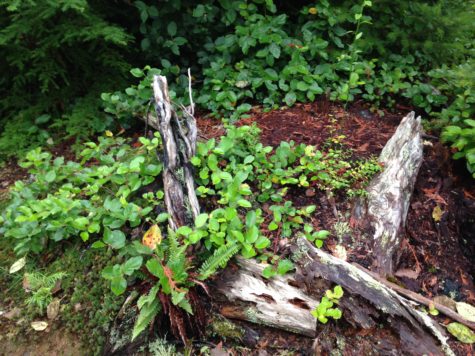A Popular, Not-so-Green Practice
The majority of people in British Columbia choose cremation as a simpler, less expensive alternative to whole-body burial. According to B.C.’s Vital Statistics Agency, the use of cremation in 2015 was 84% of all methods of disposition in this province. The percentage is 70.5% across Canada according to the Cremation Association of North America. Given this popularity, some natural burial grounds, including the Denman Island Natural Burial Cemetery, offer the opportunity to bury and/or scatter cremated remains.

Despite the advantages cremation offers over conventional burial, the practice is not environmentally friendly. Over a period of two to three hours the body is transformed by intense heat (800 to 1100° C) to a state of small skeletal fragments, which are then cooled and processed to a reduced consistency. This process relies on fossil fuels and produces greenhouse gases. Nevertheless, cremated remains take up less space and pose no health threat.
A number of things can be done with cremated remains. Many cemeteries have small plots for cremated remains and/or scattering gardens. Remains may also be scattered in either private or public land. According to Consumer Protection BC, as long as permission has been obtained from the landowner or local government, there are no limitations as to where ashes can be spread. However, if the deceased person has provided a written preference about the disposition of his or her ashes, that wish is binding.
Although the Green Burial Council accepts cremation as an approach that fits with green burial, it has not created standards to promote reduction of the environmental impacts of this practice. Instead, as the Council states publicly, it has chosen to spend its resources on public education and on compliance programs that encourage practices that are more environmentally sustainable.
